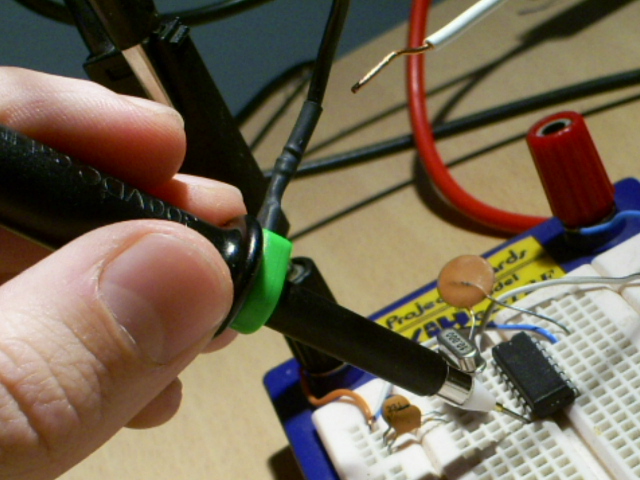When it comes to oscilloscope probes, one size does not fit all. Different measurement scenarios call for different types of probes, and understanding the differences between active and passive oscilloscope probes is crucial for accurate testing and analysis. In this article, we will explore the distinctions between these two probe types and help you determine which one is the right fit for your specific application.

Active Oscilloscope Probes
Active oscilloscope probes (such as the N2796A or the N2891A from Keysight) are equipped with active circuitry, typically in the form of transistors and an amplifier. This additional circuitry sets them apart from their passive counterparts and brings about several key differences.
Bandwidth: Active probes typically offer a higher bandwidth compared to passive probes. This means they can accurately measure higher frequency signals. While passive probes are generally limited to 100 MHz or less, active probes can have bandwidths of 1 GHz or even more, making them ideal for high-frequency measurements.
Input Capacitance: Another significant difference is in input capacitance. Active probes have lower input capacitance, which is essential because high input capacitance can load down the circuit under test and distort the measured signal. Active probes typically have an input capacitance of just a few picofarads, whereas passive probes can have input capacitance in the tens or even hundreds of picofarads.
Cost: Active probes tend to be more expensive than their passive counterparts. This higher cost is attributed to the complex circuitry and components used in active probes.
Passive Oscilloscope Probes
In contrast, passive oscilloscope probes (such as the N2863B from Keysight) do not contain active circuitry. They are simpler in design and functionality.
Bandwidth: Passive probes typically have a lower bandwidth compared to active probes. They are generally suitable for general-purpose probing and troubleshooting but may not perform well when measuring high-frequency signals.
Input Capacitance: Passive probes have higher input capacitance compared to active probes. While this makes them less suitable for high-frequency applications, it also means they are less likely to affect the circuit under test in low-frequency scenarios.
Cost: Passive probes are generally more cost-effective, making them a budget-friendly choice for general measurements.

Choosing the Right Probe
Selecting the appropriate probe for your measurement needs depends on several factors. Firstly, consider the frequency and amplitude of the signal you are measuring. If you are dealing with high-frequency signals, an active probe is likely your best choice. For lower frequency signals, a passive probe may suffice. You will also want to assess the sensitivity of the circuit under test. If the circuit is sensitive to loading effects, opt for an active probe with lower input capacitance to minimize any disruptions to your measurements.
Active probes are primarily used for measuring high-frequency signals or signals from circuits that are sensitive to loading. Their lower input capacitance and higher bandwidth make them well-suited for such applications. Some common applications for active probes include measuring high-frequency signals, measuring signals from circuits that are sensitive to loading, measuring high-voltage signals, and measuring currents.
Passive probes are commonly used for general-purpose probing and troubleshooting. They are a go-to choice when the circuit under test is not highly sensitive to loading effects. Some common applications for passive probes include general-purpose probing and troubleshooting, measuring low-frequency signals, and measuring signals from circuits that are not sensitive to loading.
Active and passive oscilloscope probes have distinct characteristics that cater to different measurement scenarios. Active probes shine in high-frequency applications, thanks to their higher bandwidth and lower input capacitance, while passive probes are cost-effective and suitable for general-purpose measurements. Understanding these differences will empower you to make informed choices and ensure accurate results in your test and measurement applications.